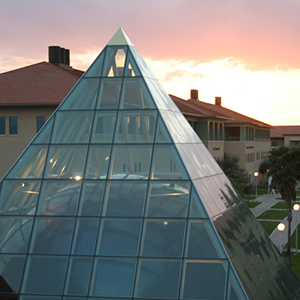TAMIU Lecture Provides Insight on Total Solar Eclipse

Peter Davis, director of Texas A&M International University’s (TAMIU) Lamar Bruni Vergara Planetarium, will share his personal experiences with and knowledge about total solar eclipses during a presentation at the Planetarium tonight, April 5, at 7:30 p.m.
This event is open to the public. There is a $3.00 admission charge.
If you have questions about Friday’s event, contact Davis, at 956.326.3128, or email peter.davis@tamiu.edu.
The first 87 people attending the presentation will receive a free pair of eclipse safety glasses.
David addressed the historical aspect of Monday’s eclipse event.
“This is the only total solar eclipse in South Texas for the next 54 years. It will be visible in Eagle Pass and other cities west and north of us like Uvalde. It’s a ‘once-in-a-lifetime’ event. The next total solar eclipse will be in Brownsville and McAllen on May 11, 2078,” Davis said.
Davis is a veteran of three total solar eclipses and said his presentation Friday will address what causes solar and lunar eclipses, the differences between partial, annular, and total solar eclipses, the times and path of the April 8 total solar eclipse in Texas, the spectacular things one can experience if in the total eclipse path, what will be visible in Laredo, and how to safely watch and photograph a solar eclipse.
“A total eclipse is a rare, awe-inspiring celestial event that you should take the whole family to see. It drastically changes the appearance of the two biggest objects we see in our sky: our Sun and Moon,” Davis explained, “The Moon will cover 100% of the Sun for approximately 4 minutes when it is viewed from the 115-mile-wide path of totality that will pass through Eagle Pass, Kerrville, and Dallas, Texas, and then sweep through 13 U.S. states from Texas to Maine.”
“Here in Laredo on April 8, the Moon will appear to be slightly to the side of the Sun, covering about 97% of the Sun's disk. We will experience a partial eclipse, which will not darken the sky since the Sun will be a very thin crescent at the maximum point of the eclipse,” Davis explained.
Davis said that the times of the partial eclipse’s phases visible in Laredo are as follows:
12:09:20 PM Partial Eclipse begins (First Contact- The first edge of the Moon touches the Sun)
1:29:14 PM Maximum Partial Eclipse (Extremely thin crescent shape of the Sun is visible)
2:51:16 PM Partial Eclipse ends (Last Contact- The last edge of the Moon leaves the Sun)
“Safety is the number one priority when viewing a solar eclipse,” Davis cautioned.
“It is not safe to look directly at the Sun without specialized eye protection like the free eclipse glasses that will be given out at this event. Viewing any part of the bright Sun through a camera lens, binoculars, or a telescope without a special-purpose solar filter in front of the optics, will instantly cause severe eye injury," he said.
A solar eclipse occurs when the Moon is precisely lined up between the Earth and the Sun, casting a moving shadow on Earth. A total solar eclipse happens when the Moon appears to be the same size as the Sun, so it fully covers the disk of the Sun, darkening part of the sky, and making it so some bright stars and planets are visible in the daytime. The Sun’s beautiful outer atmosphere called the corona, which normally cannot be seen, is visible during this ‘totality’ phase. The corona has a different shape during each eclipse because the number of sunspots that are present affects the shape of the corona.
Whether the Moon can completely cover the Sun's disk during an eclipse depends on the Moon's distance from Earth. The Moon has a slightly elliptical orbit around Earth, so at one point each month it is farthest from the Earth (apogee) making the Moon appear slightly smaller than average, and it is closest to Earth (perigee), making the Moon appear slightly larger than average in our sky. During this solar eclipse, the Moon is near to its closest approach to Earth, so it will cast a shadow that sweeps across Mexico, through much of the U.S., and a small part of Canada.
For more information about this eclipse, visit the Planetarium’s webpage at https://www.tamiu.edu/planetarium/index.shtml or NASA’s website at https://solarsystem.nasa.gov/eclipses/home/. To find out the eclipse times for other cities, visit https://www.timeanddate.com/eclipse/in/usa/laredo?iso=20240408.
Registration for Maymester, Summer, and Fall at TAMIU is underway.

